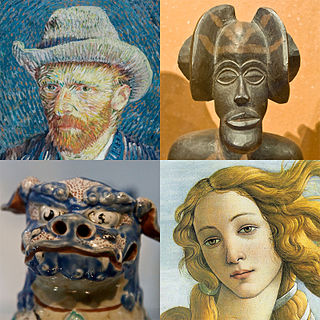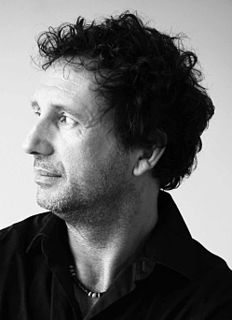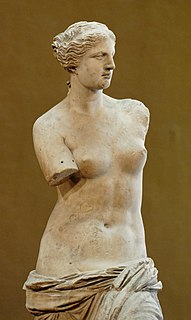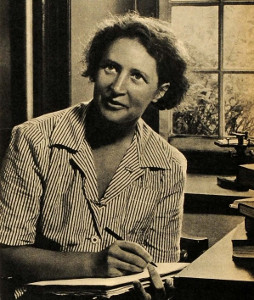
Art is a diverse range of human activities involving the creation of visual, auditory or performing artifacts (artworks), which express the creator's imagination, conceptual ideas, or technical skill, intended to be appreciated primarily for their beauty or emotional power. Other activities related to the production of works of art include art criticism and the history of art.

Aesthetics, or esthetics, is a branch of philosophy that deals with the nature of beauty and taste, as well as the philosophy of art. It examines subjective and sensori-emotional values, or sometimes called judgments of sentiment and taste.
Allusion is a figure of speech, in which an object or circumstance from unrelated context is referred to covertly or indirectly. It is left to the audience to make the direct connection. Where the connection is directly and explicitly stated by the author, it is instead usually termed a reference. In the arts, a literary allusion puts the alluded text in a new context under which it assumes new meanings and denotations. It is not possible to predetermine the nature of all the new meanings and inter-textual patterns that an allusion will generate. Literary allusion is closely related to parody and pastiche, which are also "text-linking" literary devices.

In the context of United States law, originalism is a concept regarding the interpretation of the Constitution that asserts that all statements in the constitution must be interpreted based on the original understanding "at the time it was adopted". This concept views the Constitution as stable from the time of enactment and that the meaning of its contents can be changed only by the steps set out in Article Five. This notion stands in contrast to the concept of the Living Constitution, which asserts that the Constitution should be interpreted based on the context of the current times, even if such interpretation is different from the original interpretations of the document. Living constitutionalists sometimes argue that we cannot apply an original understanding of the Constitution because the document is too old and too cryptic.
Self-deception is a process of denying or rationalizing away the relevance, significance, or importance of opposing evidence and logical argument. Self-deception involves convincing oneself of a truth so that one does not reveal any self-knowledge of the deception.
In literary theory and aesthetics, authorial intent refers to an author's intent as it is encoded in their work. Authorial intentionalism is the view, according to which an author's intentions should constrain the ways in which a text is properly interpreted.
The term heteroglossia describes the coexistence of distinct varieties within a single "language". The term translates the Russian разноречие [raznorechie: literally, "varied-speechedness"], which was introduced by the Russian literary theorist Mikhail Bakhtin in his 1934 paper Слово в романе [Slovo v romane], published in English as "Discourse in the Novel." For Bakhtin, this diversity of "languages" within a single language is not, in essence, a purely linguistic phenomenon: rather, heteroglossia is a reflection in language of varying ways of evaluating, conceptualizing and experiencing the world. It is the convergence in language or speech of "specific points of view on the world, forms for conceptualizing the world in words, specific world views, each characterized by its own objects, meanings and values."

The functionalism–intentionalism debate is a historiographical debate about the origins of the Holocaust as well as most aspects of the Third Reich, such as foreign policy. The debate on the origins of the Holocaust centres on essentially two questions:
The implied author is a concept of literary criticism developed in the 20th century. Distinct from the author and the narrator, the term refers to the "authorial character" that a reader infers from a text based on the way a literary work is written. In other words, the implied author is a construct, the image of the writer produced by a reader as called forth from the text. The implied author may or may not coincide with the author's expressed intentions or known personality traits.

Stephen Roy Albert Neale is a British philosopher and specialist in the philosophy of language who has written extensively about meaning, information, interpretation, and communication, and more generally about issues at the intersection of philosophy and linguistics. Neale is currently Distinguished Professor of Philosophy and Linguistics and holder of the John H. Kornblith Family Chair in the Philosophy of Science and Values at the Graduate Center, City University of New York (CUNY).
Kevin Jon Vanhoozer is an American theologian and current Research Professor of Systematic Theology at Trinity Evangelical Divinity School (TEDS) in Deerfield, Illinois. Much of Vanhoozer's work focuses on systematic theology, hermeneutics, and postmodernism.
The hermeneutic circle describes the process of understanding a text hermeneutically. It refers to the idea that one's understanding of the text as a whole is established by reference to the individual parts and one's understanding of each individual part by reference to the whole. Neither the whole text nor any individual part can be understood without reference to one another, and hence, it is a circle. However, this circular character of interpretation does not make it impossible to interpret a text; rather, it stresses that the meaning of a text must be found within its cultural, historical, and literary context.

Art history is the study of aesthetic objects and visual expression in historical and stylistic context. Traditionally, the discipline of art history emphasized painting, drawing, sculpture, architecture, ceramics and decorative arts, yet today, art history examines broader aspects of visual culture, including the various visual and conceptual outcomes related to an ever-evolving definition of art. Art history encompasses the study of objects created by different cultures around the world and throughout history that convey meaning, importance or serve usefulness primarily through visual representations.
Terry Michael Barrett is an American art critic, and Professor Emeritus at The Ohio State University. His many books, anthology chapters, and articles about contemporary art, art criticism, aesthetics, and the teaching of these, have had a significant impact on the field.
An interpretation in philosophy of art, is an explanation of the meaning of some work of art. An aesthetic interpretation expresses a particular emotional or experiential understanding most often used in reference to a poem, or piece of literature, and may also apply to a work of visual art, or performance.

Susanne Katherina Langer was an American philosopher, writer, and educator and was well known for her theories on the influences of art on the mind. She was one of the first women in American history to achieve an academic career in philosophy and the first woman to be popularly and professionally recognized as an American philosopher. Langer is best known for her 1942 book entitled, Philosophy in a New Key. In 1960, Langer was elected a Fellow of the American Academy of Arts and Sciences.

The Mencius is a collection of conversations, anecdotes, and series of genuine and imagined interviews by the Confucian philosopher, Mencius. The book explores Mencius’ views on the topics of moral and political philosophy, that are often posed as a dialogue to the ideas presented by Confucianism. The interviews and conversations are depicted as being either between Mencius and the various rulers of the Warring States period, or with his students and other contemporaries. The book documents Mencius’ travel across the states, and his philosophical conversations and debates with those he meets on his journey. A number of scholars suggest that the text was not written by Mencius himself, but rather by his disciples. The text is believed to have been written during the late 4th century BC.
William Irwin is Professor of Philosophy at King's College in Wilkes-Barre, Pennsylvania and is best known for originating the "philosophy and popular culture" book genre with Seinfeld and Philosophy: A Book about Everything and Nothing in 1999 and The Simpsons and Philosophy: The D'oh! of Homer in 2001.
Daniel Osher Nathan is an American philosopher and Professor of Philosophy at Texas Tech University. He is known for his expertise on aesthetics, ethical theory, and philosophy of law.

Medium Essentialism is a philosophical theory stating that each artform has its own distinctive medium, and that the essence of such an artform is dependent on its particular medium. In practice, the theory argues that every artwork should manifest its essential properties, those which no other artform can employ. The theory relies on the presumption that every artform has a unique medium, and is divided into two main interpretations. The ‘limitation’ interpretation of Medium Essentialism argues that, due to their medium, some artforms should be constrained in their aspirations. The ‘productive’ interpretation reasons that a work's medium determines what content or style will function best, and that practitioners should pursue ventures aligning with the nature of this chosen medium. Clement Greenberg is a prolific medium-essentialist in relation to modernist art, proposing that artists such as Jackson Pollock are successful because they properly exploit elements of their chosen medium, such as a painting's physical flatness. However, Medium Essentialism was most propagated by film practitioners throughout the twentieth century, as it legitimised cinema as an artform for the first time. Previously, film had been regarded as merely a recorded representation of a written play. It is therefore most discussed today by film theorists, stemming from the work of critics such as André Bazin. Regardless of the interpretation favoured, what constitutes a film's medium, and therefore essential meaning, has been heavily debated, and has prompted the creation of several sub-theories. The theory has been widely discussed among contemporary film theorists and has featured in the Anthology of the Philosophy of Film and Motion Pictures.










